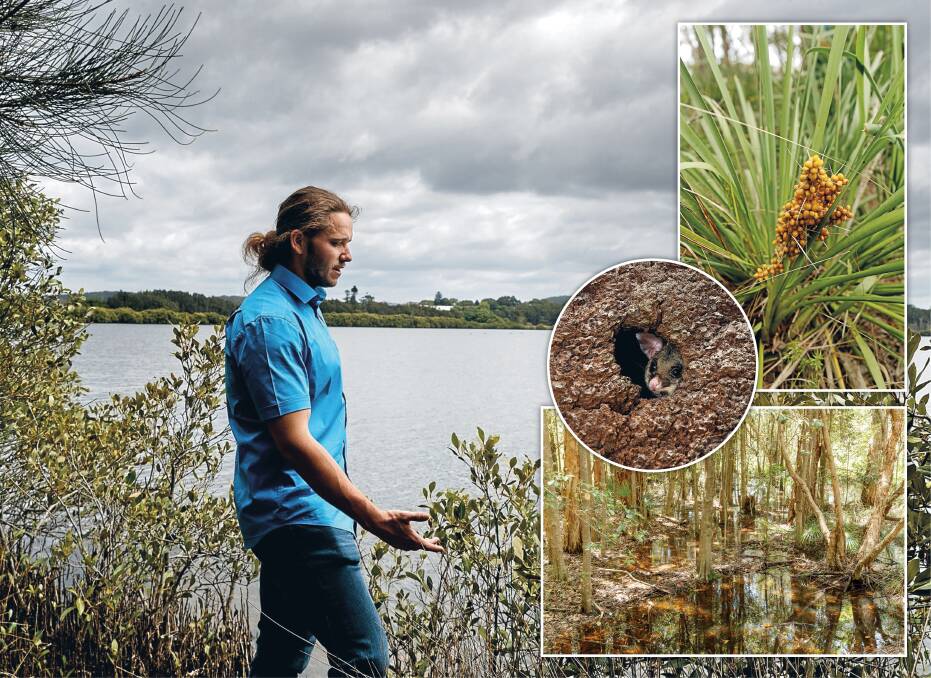
BACK in the day, when a train ran to Lake Macquarie, passengers travelling from Newcastle would see a sign at Adamstown station, advising, "Change here for Belmont Line".
For my journey along the old Belmont Line, reincarnated as the Fernleigh Track, I'm pushing against the flow of history. And I'm travelling contrary to how this shared cycle and pedestrian pathway of just over 15 kilometres was progressively unveiled between 2003 and 2011.
Instead of travelling outwards, I'm journeying inwards, towards Adamstown. I'm starting at the Belmont end of the track.
The station at Belmont opened during the Christmas holidays in 1916. It was just what many people needed. By changing to the Belmont Line, passengers could bring change to their daily lives, no matter how briefly. A journey to the lake transported them away not just from the gritty air of Newcastle but also from the uncertainty and grief they were contending with.
For at the time, the First World War was reshaping the globe and decimating the lives of young Australians fighting on the Western Front. Little wonder photos show the new Belmont station's platform crowded with passengers, eagerly waiting to greet the first train, on December 26, 1916.
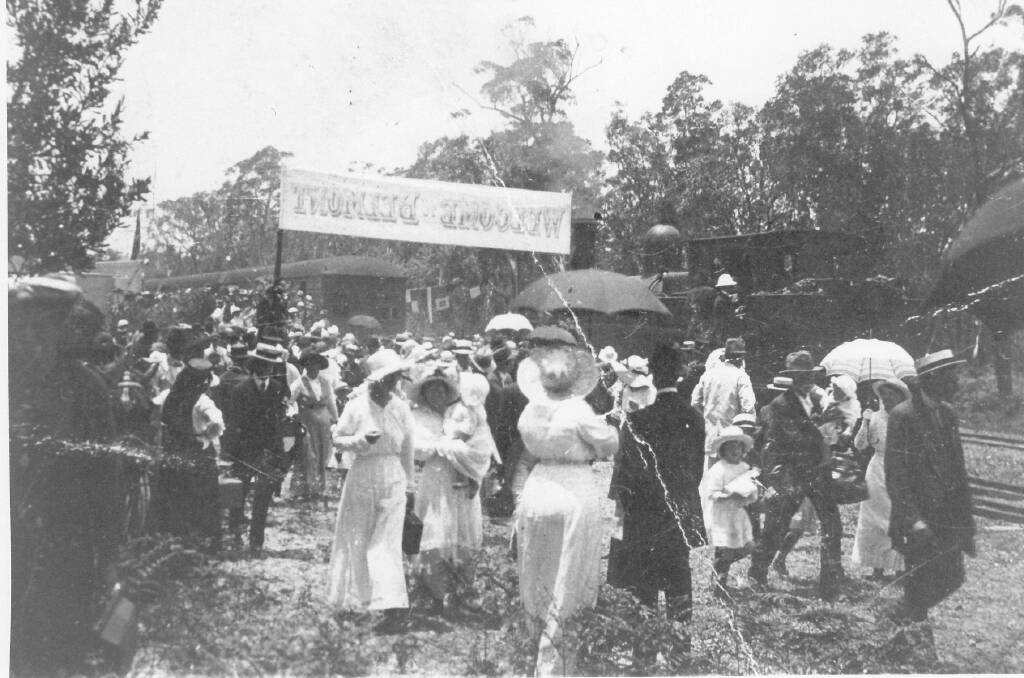
For more than half a century, trains brought people to Belmont. The end of the line meant the beginning of a holiday, or a picnic on the shores of the lake. Or it simply transported people through their daily lives, to and from the city.
The last passenger train rattled into Belmont station in 1971.
At the time, the Newcastle Morning Herald noted, "Last night the line was farewelled by a few and forgotten by thousands."
Belmont station's platform became unpeopled. But it hasn't been forgotten.
These days, a sign on the platform assures it is "Belmont". Yet it is not the station the generations of passengers would recognise. Just off the lip of the platform, where the train would have been loading and disgorging its human freight, there is now a row of cycads. The tracks that carried the trains have been recycled and reimagined as borders for paths and as a frame for a pergola near the platform.
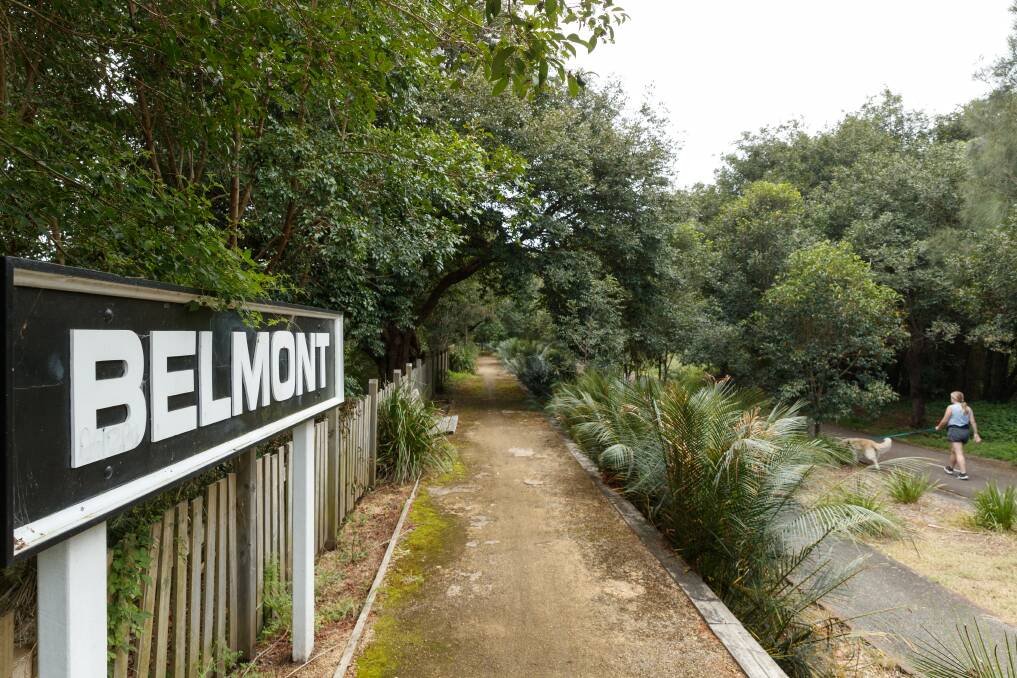
As I sit on a bench on the platform, I can see a small length of rusting tracks, as they reach their new terminus, a mass of bush. The view from the platform is filled with vegetation.
If I were sitting here during the life of the station, I would have been looking across open ground to a tangle of tracks. A series of sidings curved off towards the east. The sidings led to coal-loading facilities along the shore of Belmont Lagoon. The coal was mined in a few small collieries locally.
While that history of rail and coal is now largely obscured, a reminder of how the past flows into the present glistens through the bush. Belmont Lagoon. I can see slivers of water, silvery in the subdued light, as they rub against the shaggy-skinned trunks of the melaleucas.
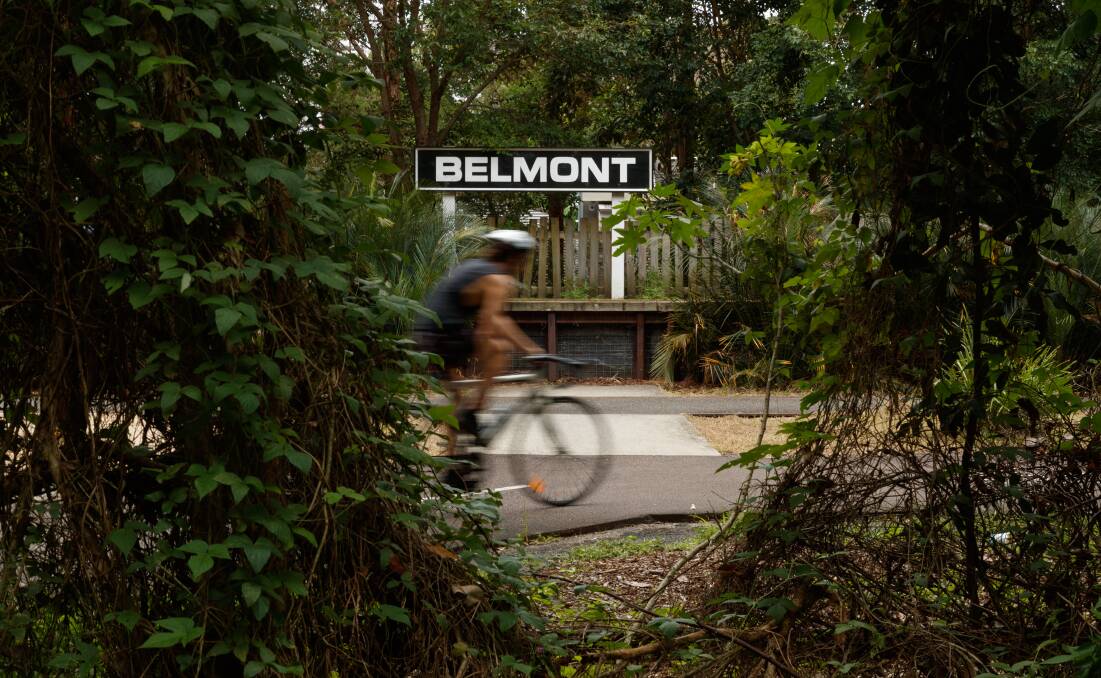
Belmont Lagoon once contained fresh water. However, during the Second World War, fears of a Japanese invasion led to a host of defence works around here, including the shaping of nearby Cold Tea Creek into an anti-tank ditch, which opened the lake to the lagoon. The Japanese never invaded, but the saltwater did, sluicing into the lagoon and impacting on its ecosystems.
Life along the lagoon's shore changed, but it has remained immutably, unconquerably beautiful.
The presence of the lagoon is one of the main reasons I want to start my Fernleigh Track journey at Belmont. The stories flowing from the lagoon give a sense of how long people have been connected to the land I'm about to travel through.
Kentan Proctor, the acting CEO and a culture and land management officer at Bahtabah Local Aboriginal Land Council, explains the lagoon is a "a massive part of our culture and history".
Many generations of Awabakal people derived food from it and drank the water it held. And the vegetation around the shores were, and can still be, used.
Mr Proctor peels a piece of paperbark and explains it could be used as a bandage or for wrapping food.
"It's one of the most important relevant places in Lake Macquarie," Mr Proctor says, as he looks across the lagoon at a bevy of swans gliding across the surface.
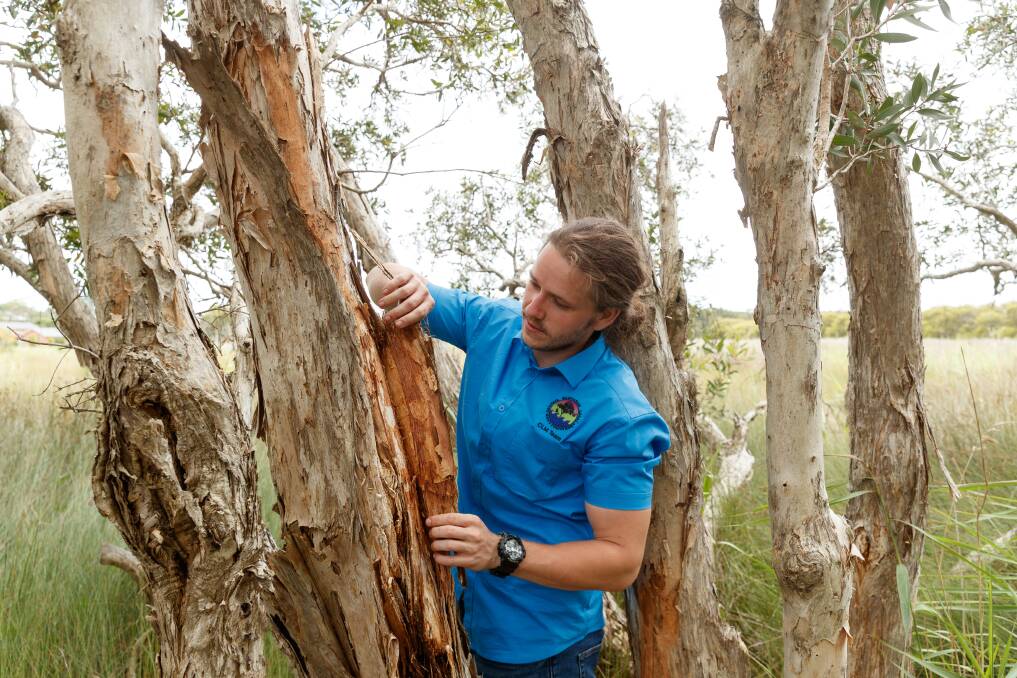
As the Awabakal tell it, and this story is recounted on a sign by the track, Belmont Lagoon was formed by the tears of the moon man, Pontoe-Boong. He was sad and lonely in the darkness, his face rarely seen by those on earth. Pontoe-Boong began crying.
His tears created not just a lagoon but, in the process, a mirror. He could see himself reflected in the water. He was delighted that people would be able to see his reflection in the lagoon he had created. In his honour, the Awabakal clans would gather at the lagoon and hold a ceremony when Pontoe-Boong was at his brightest.
The Pontoe-Boong story inspired Indigenous artist and local community leader Doug Archibald to create a painting depicting the lagoon being born. That image, he says, is displayed at John Hunter Hospital.

Doug Archibald, who has spent most of his life around the lake, recalls a special evening by the lagoon. He had accompanied a fellow artist, Nicole Monks, to show her the lagoon by night, as research for a work she was creating for an exhibition at the Museum of Art and Culture yapang, Lake Macquarie, in 2019. Nicole Monks, a Yamaji Wajarri woman from Western Australia, had arranged for dancers to perform on the shore, evoking the traditions of so many generations before them who had gathered along the lagoon's fringe.
There was one more performance that night.
The moon made its appearance, glistening on the lagoon's surface and gleaming in everyone's eyes.
There were no tears from the moon that night; just joy across the water.
As Doug Archibald says, "When you see the moon shining on the lagoon, it's something to see".
And to walk the Fernleigh Track is something to feel. It is about experiencing a walk through time.
"A lot of those trails were walking trails for First Nations people since the beginning of time," Nicole Monks explains. "When we walk there, our footprints are going over those footprints from before, and we're creating footprints for the next generation. We have to be very respectful of that."
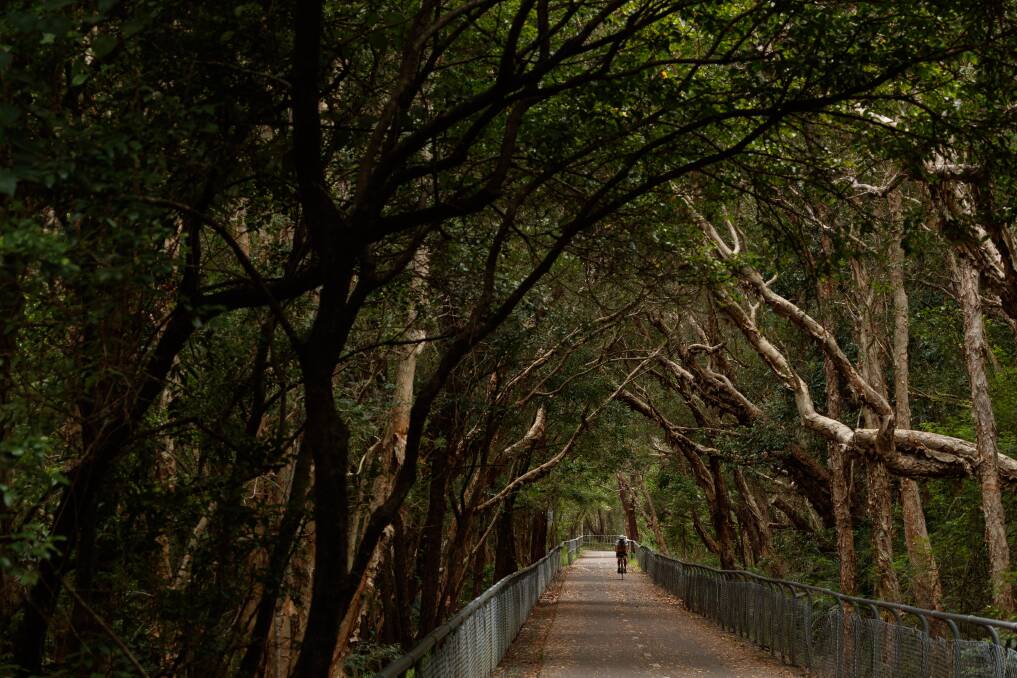
I HAVE ridden my bicycle along the Fernleigh Track many times, and for this story I pedal it once more. I have also explored it on foot, taking it slowly, taking in as much as I can, following in the steps of those before me.
As I set off from Belmont, I travel under trees arcing over the track like a proscenium arch, leading me into the theatre of nature and history ahead.
On either side, the melaleuca forest looks as though it is floating, as the trees' feet rest in water. The path shifts onto a boardwalk that levitates above the tea-coloured water, which is garlanded with plants and algae. The air is rich with the chirpingand clicking sounds of frogs.
A few trunks are blackened, still wearing the reminders of a bushfire. It is remarkable to observe the signs of fire so close to water, those two formidable elements co-existing in the wetlands.
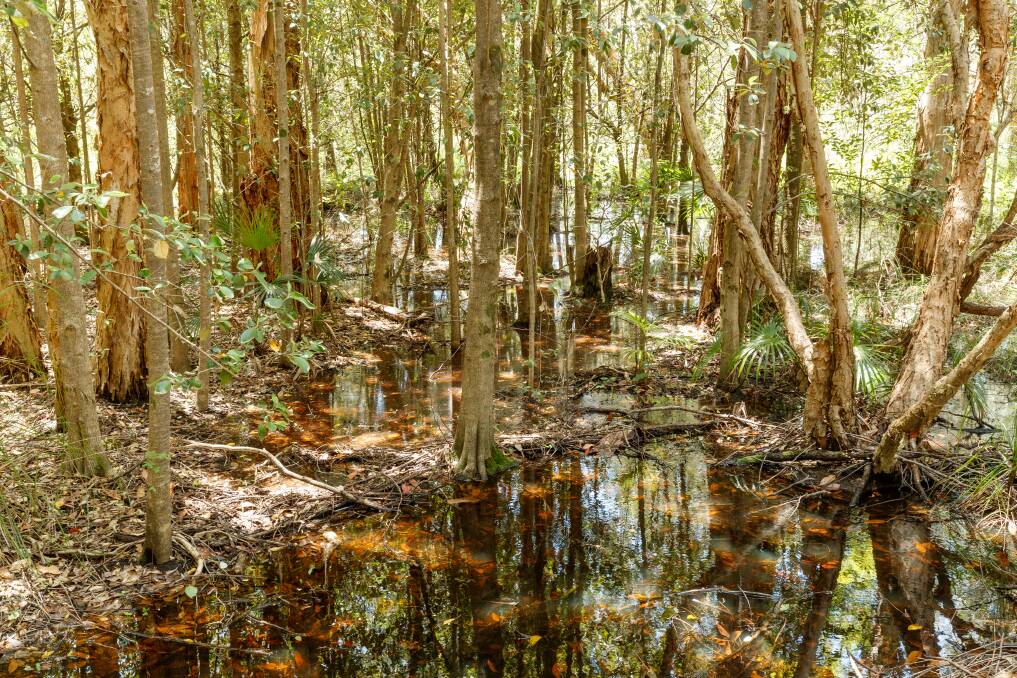
A woman on a bike rides by, with two kids in her trail and a broad smile on her face: "I didn't realise there was so much green here. It's so beautiful!"
At a mark indicating I have 14 kilometres to go, there is a sign to Nine Mile Beach, which is just over the dunes to the right. I can hear the sea rumbling. I turn left, into the sandy-footed bush, and onto the Wildflower Walk, a 1.7-kilometre trail meandering beside the Fernleigh Track.
The trail was badly hit by a bushfire in 2019, with more than 40 species of native flowers planted by volunteers burnt in the blaze. Nine months after the fire, I visited here and saw a slowly recovering landscape. The scene was like a woodblock print, stripped of bright colours but brimming with energy. The bare branches of trees were imploring fingers scratching at the platinum sky.
By early 2022, the Wildflower Walk is flourishing again. The once-bare branches are gloved in leaves, and the foliage presses in on the sandy track.
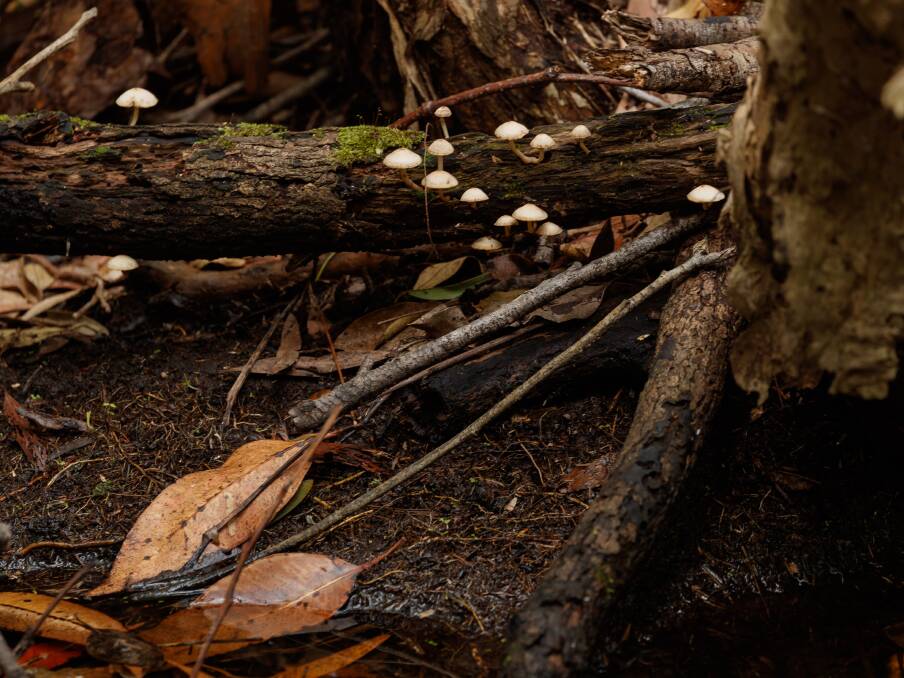
It is not just fire that has left its mark here through the years; so have humans. For several decades from the 1950s, the sand attracted industry. The land was stripped by mineral sand mining. Photos depict trains passing through what looked like a desert.
Further to the left of here, John Darling Colliery operated for more than 60 years, helping feed the hungry beast that was BHP's Newcastle steelworks.
Rail historian and author Ed Tonks says as well as having John Darling Colliery, BHP would buy other mines further north along this line, including Lambton Colliery at Redhead and Burwood Colliery, near Whitebridge.
"If it wasn't for those, the steelworks wouldn't have had a ready supply of local coal," Ed Tonks says. "That's how important they were.
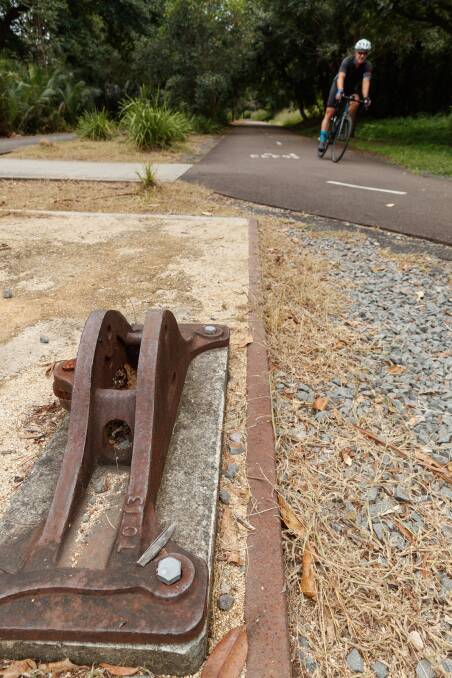
"That was a real lifeline to the steel industry at Port Waratah."
The first load of coal from John Darling Colliery was on the rails, bound for the steelworks, in 1927. The colliery became a landmark in the life of Belmont, implanting itself on the undulating sandy terrain, while deep underneath it, hundreds of local men burrowed into the coal seams.
In 1988, the last trainload of coal was hauled out of the colliery, along a spur line and onto the Belmont Line. And with that train's passing, a southern section of the line fell into disuse. As for the former colliery, young minds now flower there; part of the land hosts a school.
As I walk along the wildflower trail, I marvel at the power of nature.
Despite whatever is thrown at it, burnt out of it and extracted from it, the bush displays resilience in subtle yet stunning ways. I notice, fluttering in the breeze, the white petals of coastal beard heath, looking as delicate as snowflakes but gleaming like hope itself.
Tomorrow: Journeying through Jewells to Redhead.
Read part one of "On the Fernleigh Track with Scott Bevan".








